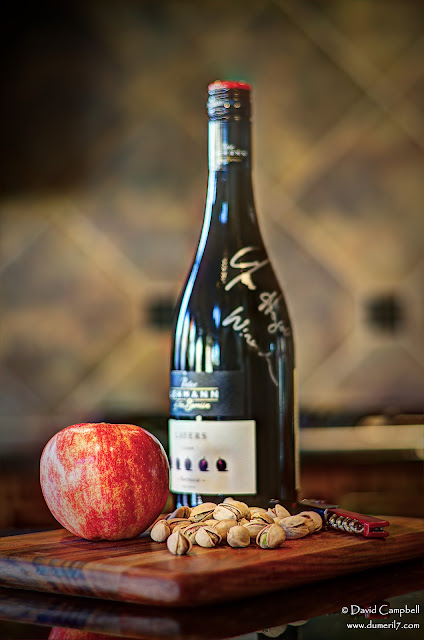Simple

I have this photography book that goes into great detail on how to do focus stacking -- where you take a series of photos of the same scene from the same vantage point, but focusing on different object in the scene; then you combine the photos (using software), making a seamless composite image with all the in-focus objects. When I read this, I didn't think I'd have much use for it because I thought, "Why not just use your aperture or lens selection to give you the depth of field you want? Seems like a lot less trouble." Well, now I know one reason why. In the photo above I couldn't get a sufficient number of the objects in focus without also ruining the nice bokeh I had going on the background. With focus stacking, I could have gotten that wine bottle in focus and still kept the creamy background. So I had a compositional conundrum: What should I focus on? The bottle is the obvious choice since it's the biggest object in the scene and the eye is drawn immediately to it. But I went with the apple, perhaps in an act of not-so-original sin. I was trying to go for delayed comprehension -- where the first thing you present in an image is not the actual focal point and the viewer has to spend a little bit of time following the visual cues to get to it which, if you don't make it too much of a pain in the ass, can be a more rewarding viewing experience. Sort of Where's Waldo in composition. Now, I admit there are more effective examples and methods to achieve this, but the opportunity was there and I'd never done it so I went for it.
Comments
Post a Comment